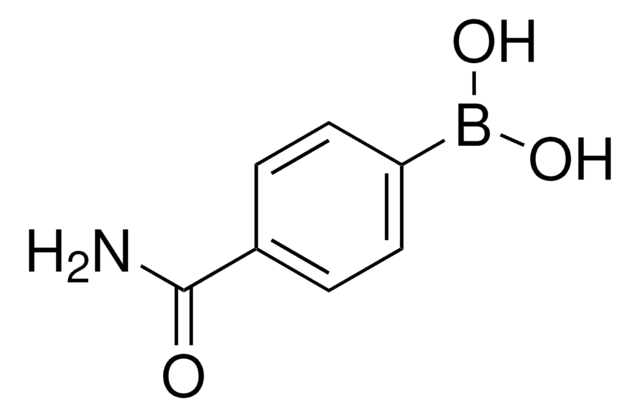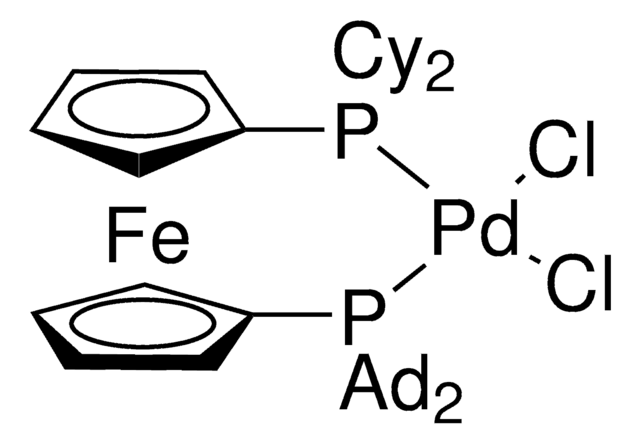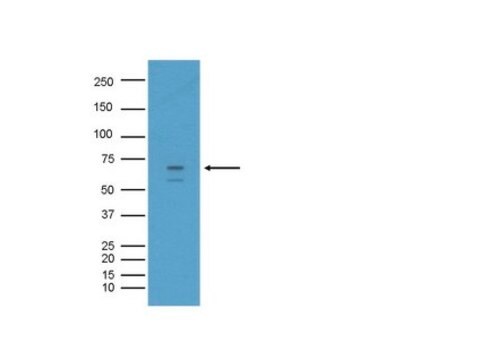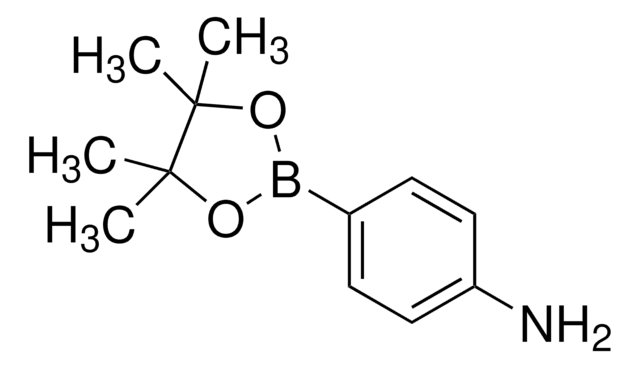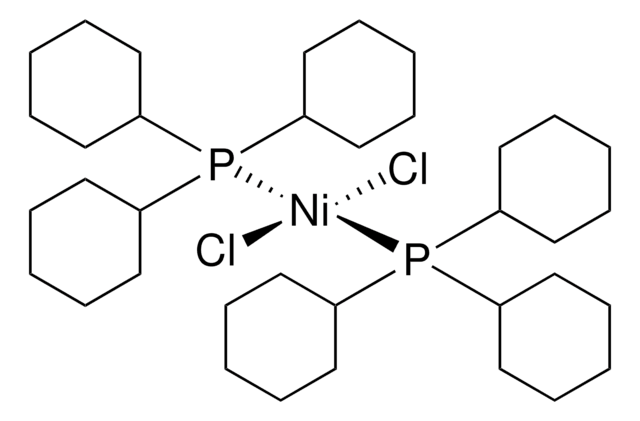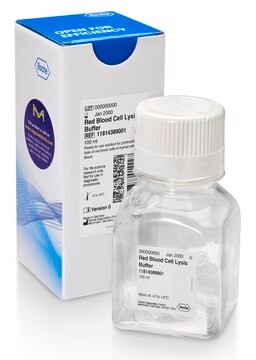推薦產品
生物源
rabbit
品質等級
抗體表格
affinity isolated antibody
抗體產品種類
primary antibodies
無性繁殖
polyclonal
純化經由
affinity chromatography
物種活性
human
製造商/商標名
Chemicon®
技術
immunohistochemistry: suitable
western blot: suitable
UniProt登錄號
運輸包裝
wet ice
目標翻譯後修改
unmodified
基因資訊
human ... BACE1(23621)
一般說明
Alzheimer′s disease (AD) is characterized by the progressive formation in the brain of insoluble amyloid plaques and vascular deposits consisting of the 4-kD amyloid b-peptide (Ab). Ab generation is initiated by proteolytic cleavage of the amyloid precursor protein (APP) at the N-terminal of Ab by b-secretase. The Ab peptide is then released by proteolytic cleavage at its C-terminus by g-secretase. Because both these proteases are prime candidates for therapeutic intervention, an intense search has been underway to identify these two enzymes.A human transmembrane aspartic-protease (Asp2), referred to as BACE, has been characterized and shown to have all the properties of b-secretase. Four groups in all have now confirmed that BACE (or Asp2) is a convincing candidate for b-secretase.
BACE is an N-glycosylated integral membrane aspartyl protease with Mr=70 kDa. Mature BACE is produced from the immature form through a series of post-translational proteolytic cleavages and glycosylation. Sequence analysis has revealed that the immature form of BACE contains an N-terminal signal sequence (residues 1-21) followed by a large catalytic domain, a single transmembrane domain (residues 461-477), and a short cytoplasmic domain (residues 478-501). The signal sequence (1-21) is cleaved from the immature form by a signal peptidase located in the endoplasmic reticulum (ER), yielding the proBACE protein (Mr=75 kDa) which starts at residue 22. The proBACE protein is modified by cleavage of 24 N-terminal residues (aa 22-45), producing the mature BACE protein.
BACE is an N-glycosylated integral membrane aspartyl protease with Mr=70 kDa. Mature BACE is produced from the immature form through a series of post-translational proteolytic cleavages and glycosylation. Sequence analysis has revealed that the immature form of BACE contains an N-terminal signal sequence (residues 1-21) followed by a large catalytic domain, a single transmembrane domain (residues 461-477), and a short cytoplasmic domain (residues 478-501). The signal sequence (1-21) is cleaved from the immature form by a signal peptidase located in the endoplasmic reticulum (ER), yielding the proBACE protein (Mr=75 kDa) which starts at residue 22. The proBACE protein is modified by cleavage of 24 N-terminal residues (aa 22-45), producing the mature BACE protein.
特異性
BACE (beta-site APP Cleaving Enzyme).
應用
This Anti-BACE Antibody, C-terminus is validated for use in WB, IH for the detection of BACE.
Western blot on COS7 transfected cells. The antibody recognizes a band of ~70-75 kDa. It also recognizes a band at ~45 kDa.
Immunohistochemistry on rat and monkey.
Optimal working dilutions must be determined by end user.
Immunohistochemistry on rat and monkey.
Optimal working dilutions must be determined by end user.
標靶描述
70 kDa
分析報告
Control
Tested on human brain tissue lysate.
Tested on human brain tissue lysate.
法律資訊
CHEMICON is a registered trademark of Merck KGaA, Darmstadt, Germany
未找到適合的產品?
試用我們的產品選擇工具.
儲存類別代碼
12 - Non Combustible Liquids
水污染物質分類(WGK)
WGK 1
閃點(°F)
Not applicable
閃點(°C)
Not applicable
分析證明 (COA)
輸入產品批次/批號來搜索 分析證明 (COA)。在產品’s標籤上找到批次和批號,寫有 ‘Lot’或‘Batch’.。
Shengliang Li et al.
Molecular therapy. Nucleic acids, 1, e20-e20 (2013-01-25)
The fluorescent quantum dots (QDs) delivered small interfering RNAs (siRNAs) targeting β-secretase (BACE1) to achieve high transfection efficiency of siRNAs and reduction of β-amyloid (Aβ) in nerve cells. The CdSe/ZnS QDs with the conjugation of amino-polyethylene glycol (PEG) were synthesized.
Michela Guglielmotto et al.
Journal of neurochemistry, 108(4), 1045-1056 (2009-02-07)
While it is well established that stroke and cerebral hypoperfusion are both significant risk factors for Alzheimer's disease, the molecular link between ischemia and amyloid precursor protein processing has only been recently established. Specifically, hypoxia significantly increases beta-site APP cleaving
Ju-Fang Huang et al.
BMC complementary and alternative medicine, 12, 189-189 (2012-10-23)
Our previous studies indicated that oxidative stress up-regulated the expression of β-amyloid precursor protein cleavage enzyme-1 (BACE1) in rat retina. Pharmacological reports have shown Timosaponin-BII, a purified extract originating from Chinese medical herb Rhizoma Anemarrhenae, is characterized as an antioxidant.
Human apoB overexpression and a high-cholesterol diet differently modify the brain APP metabolism in the transgenic mouse model of atherosclerosis.
Bjelik, Annamaria, et al.
Neurochemistry International, 49, 393-400 (2006)
Experimental traumatic brain injury induces rapid aggregation and oligomerization of amyloid-beta in an Alzheimer's disease mouse model.
Washington, PM; Morffy, N; Parsadanian, M; Zapple, DN; Burns, MP
Journal of Neurotrauma null
我們的科學家團隊在所有研究領域都有豐富的經驗,包括生命科學、材料科學、化學合成、色譜、分析等.
聯絡技術服務